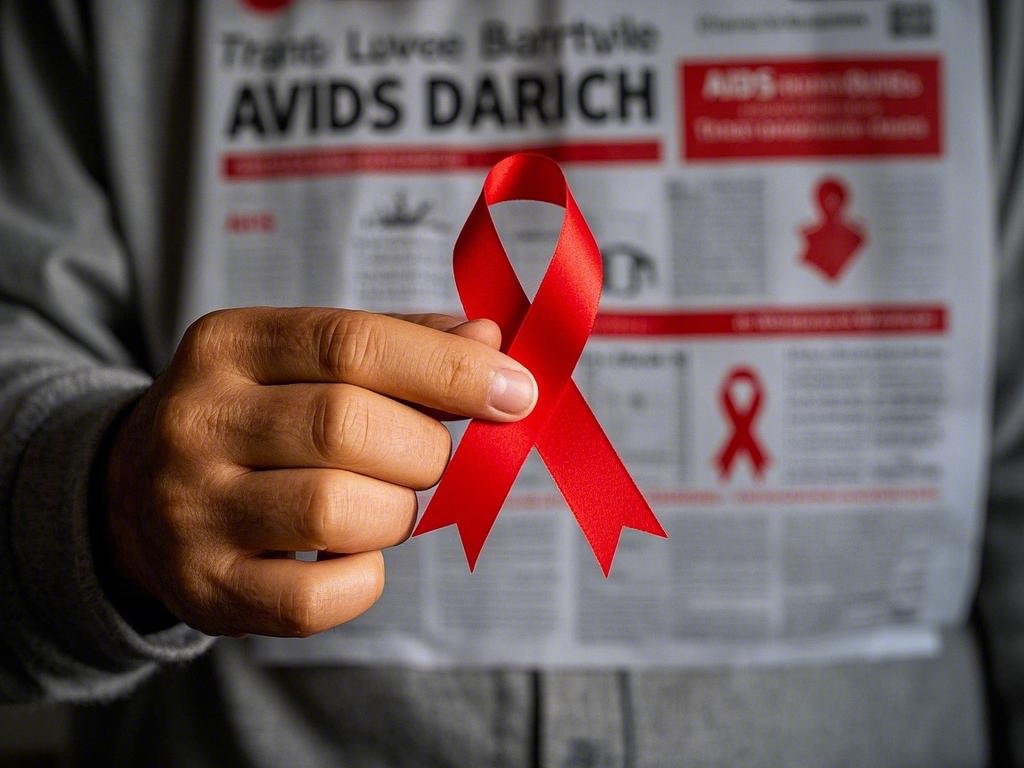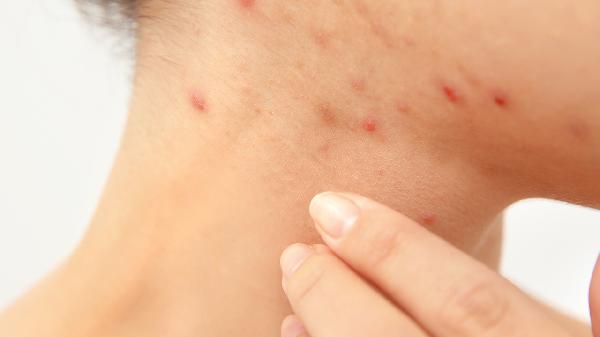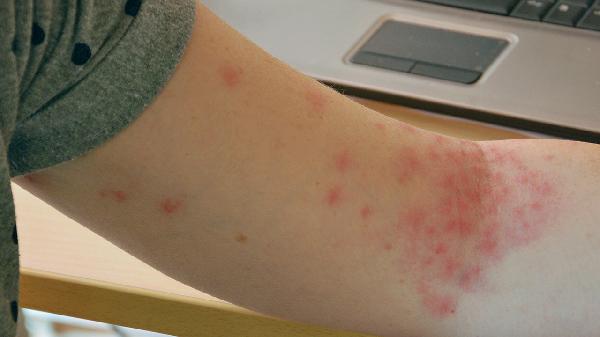Syphilis is a common sexually transmitted disease caused by the infection of Treponema pallidum in the human body. It has been around for several centuries and is currently found worldwide, making it a very important sexually transmitted disease. It can be classified into acquired syphilis, congenital syphilis, and gestational syphilis.

Specific Symptoms of Syphilis
1. Acquired Syphilis
Early Syphilis: Those infected within one year of infection, highly contagious. Manifested as local hard chancre. The incubation period from infection to the appearance of a hard chancre is 2-4 weeks.
Secondary Syphilis: Secondary syphilis is the systemic symptoms that appear after Treponema pallidum spreads from lymph nodes into the blood in large quantities, generally occurring 7-10 weeks after infection or 6-8 weeks after the appearance of a hard chancre.
Late Syphilis: Also known as tertiary syphilis, it generally occurs more than 2 years after infection. It is mostly due to untreated early syphilis, allowing it to progress naturally, or insufficient treatment, and after a certain incubation process, late syphilis occurs in any part of the body, with characteristics greatly different from early lesions.
2. Congenital Syphilis (Birth Syphilis)
Those younger than 2 years old have early congenital syphilis, and those older than 2 years have late congenital syphilis.
1. Early Congenital Syphilis: The newborn's (fetus) serum titer is 4 times higher than that of the mother, or diagnosed by lumbar puncture.
2. Late Congenital Syphilis: The manifestations are divided into two groups:
The first is the permanent marks left by early symptoms, which are no longer active: such as mulberry molars, Hutchinson's teeth, frontal bossing, saddle nose, radial scars around the oral skin, thickening of the sternoclavicular joint bone, etc.
The second is the clinical symptoms caused by active damage, including interstitial keratitis, nerve deafness, abnormal cerebrospinal fluid, hepatosplenomegaly, nasal or palatal gummas, joint effusion, arthritis, and skin and mucosal damage.
Where Syphilis Can Appear on the Body
Mouth:
The original inflammation in the mouth felt like a sore throat, with ulcers in the mouth, and the oral mucosa was very red, so it was thought to be a pharyngitis flare-up. Over-the-counter anti-inflammatory drugs were bought and taken, but the symptoms were only slightly relieved and not effectively controlled.
Apart from oral mucositis, there may be no other symptoms, and the body does not show the common syphilis rash typical of syphilis. However, after a few days, many rose-like "red rashes" might appear on the body and hands. A syphilis positive diagnosis and other sexually transmitted diseases can only be confirmed through a blood test.
However, perhaps there are no symptoms in the patient's private areas. This is why experts say that oral sex can also lead to sexually transmitted diseases. Doctors explain that because the other party had syphilis and no protection was used during oral sex, the oral mucosa was infected with a sexually transmitted disease. This situation often occurs two or three days after oral sex, with mucositis and small ulcers appearing in the mouth, similar to pharyngitis symptoms. At the same time, since a condom was used during sex, the genital area might not be infected with syphilis.
Experts remind that even if the initial site of syphilis infection is the genitals, it often only manifests as one or several red papule nodules, medically termed as syphilitic hard chancre, which is painless and non-itchy. Even if it ulcerates, there is no pain. Ordinary people often think it’s just a small red pimple on the skin and either ignore it or hope for the best, leaving it untreated. Once it ulcerates, it is the most contagious stage, although it heals quickly. Many patients think it has "healed." Since primary syphilis is short-lived, causes minimal damage, and is neither itchy nor painful, it can naturally subside even without treatment. Therefore, it is often easily overlooked by patients and seldom leads them to seek medical attention.
Hands and Soles:
In fact, Treponema pallidum can spread through the bloodstream to all organs of the body. Three to four months after the appearance of a hard chancre, secondary syphilis can develop. Some patients may enter the secondary syphilis stage without the occurrence of a hard chancre. The most common manifestation of secondary syphilis is changes in the skin and mucous membranes, with dark red macules appearing on both palms and soles, which is a relatively typical manifestation of secondary syphilis. In addition, flat condylomas may appear in the vulva and perianal areas, and oral mucosal leukoplakia and moth-eaten alopecia may also occur. There is a saying in dermatology that syphilis can 'mimic' many skin diseases. These lesions are generally neither painful nor itchy, but they contain a large number of Treponema pallidum and are highly contagious.
The site of sexually transmitted diseases can be very unusual. In recent years, with changes in lifestyle, there have been more and more unconventional sexual practices, and the sites of sexually transmitted diseases have also become very diverse. For example, a man found several green pea-sized bumps on his tongue and went to the hospital's oral department for treatment. After examination, the doctor couldn't identify what the problem was. A dermatologist was called in for consultation, and it was determined to be oral condyloma acuminatum.
Armpits, Gums:
In outpatient clinics, patients often have syphilis, condyloma acuminatum, gonorrhea, and other sexually transmitted diseases in their mouths. In fact, not only the mouth, but any area with thin mucous membranes is prone to sexually transmitted diseases through unclean sexual behavior. For example, some patients have condyloma acuminatum in their anus, "which is definitely caused by anal sex." In addition, condyloma acuminatum can also grow on toes, under armpits, on the edges of breasts, on gums, around the corners of the eyes, and inside nostrils, all of which are related to specific sexual practices.
Moreover, gonorrhea can appear not only on the genitals and the eyes as mentioned above but also infect the throat, causing gonococcal pharyngitis, mainly characterized by throat discomfort, local congestion, swollen tonsils, and purulent secretion in the throat. This disease is mostly transmitted through oral sex.
Top 10 Misconceptions Syphilis Patients Are Prone To
Misconception 1: Sexual Transmission Is the Only Route
Sexual behavior is a major route of syphilis transmission. However, syphilis can also be transmitted through other routes, one of which is indirect infection.
Normal human skin and mucous membranes have certain immunity to resist various harmful substances from entering the body. Once the skin's normal defense is breached (such as a break in the epidermis), contact with utensils, clothing, etc., carrying Treponema pallidum, or direct contact with the damaged skin mucosa of a patient, it is possible for Treponema pallidum to enter the human body and cause disease. Therefore, syphilis patients should pay attention to personal and public hygiene, wash hands before and after using the toilet, and do not use others' items to avoid harming themselves and others.
Misconception 2: Not Washing Hands After Using the Toilet Will Not Transmit the Virus?
In addition to the coron sulcus, foreskin, glans, and scrotum, syphilis rashes can also appear on fingers, lips, and eyelids, becoming one of the top 10 misconceptions about syphilis.
The wound surfaces of primary syphilis contain a lot of Treponema pallidum, which can enter the human body through damaged skin mucosa, potentially infecting others. Because many people do not realize they have small injuries on their hands, shaking hands with a syphilis patient can easily "catch" the disease. Even if the rash is not on the hands, a syphilis patient not washing hands after urinating and then shaking hands can also cause "trouble." Therefore, doctors will mark the syphilis test sheet with dangerous warnings to prevent occupational infections among testers.
Misconception 3: Using Condoms Can Block the Virus?
Treponema pallidum is abundantly present on the surface of skin mucosa lesions and also found in saliva, breast milk, semen, and urine. After entering the human body through damaged skin mucosa, it invades nearby lymph nodes within hours, spreads throughout the body via the bloodstream in 2-3 days, and after about 3 weeks of incubation, a primary chancre appears at the site of invasion, which is primary syphilis. Subsequently, the body produces antibodies, most of the spirochetes are killed, the hard chancre naturally disappears, and the disease enters an asymptomatic latent period, which is primary latent syphilis. If the disease recurs between 6 months to 2 years, it is called secondary recurrent syphilis and becomes another misconception about syphilis.
























